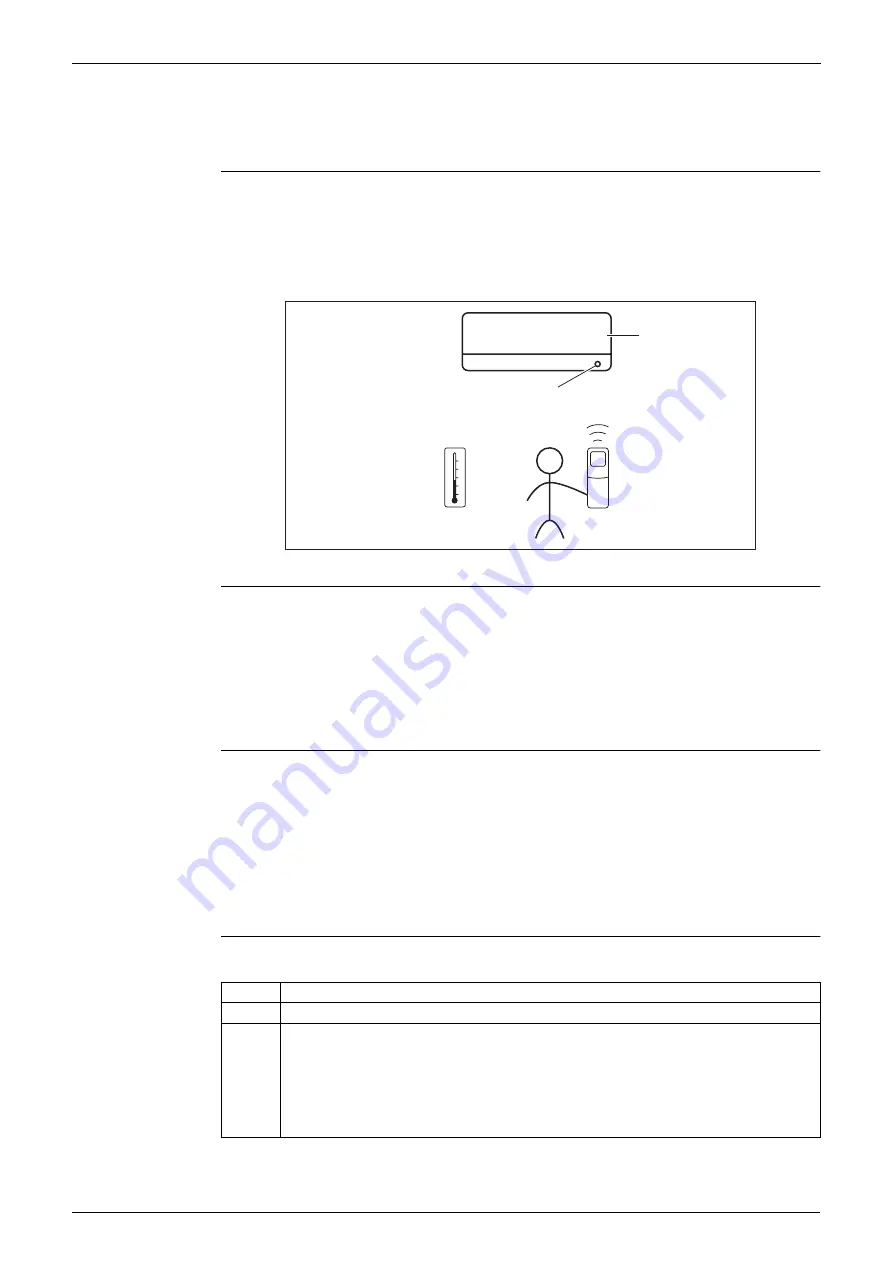
Main Functions
SiMT041509E
13
Function and Control
1. Main Functions
1.1
Temperature Control
Definitions of
Temperatures
The definitions of temperatures are classified as following.
Room temperature: temperature of lower part of the room
Set temperature: temperature set by remote controller
Room thermistor temperature: temperature detected by room temperature thermistor
Target temperature: temperature determined by microcomputer
Temperature
Control
The temperature of the room is detected by the room temperature thermistor. However, there is
a difference between the temperature detected by room temperature thermistor and the
temperature of lower part of the room, depending on the type of the indoor unit or installation
condition. Practically, the temperature control is done by the target temperature appropriately
adjusted for the indoor unit and the temperature detected by room temperature thermistor.
1.2
Frequency Principle
Control
Parameters
The frequency of the compressor is controlled by the following 2 parameters:
The load condition of the operating indoor unit
The difference between the room thermistor temperature and the target temperature
The target frequency is adapted by additional parameters in the following cases:
Frequency restrictions
Initial settings
Forced cooling operation
Inverter Principle
To regulate the capacity, a frequency control is needed. The inverter makes it possible to
control the rotation speed of the compressor. The following table explains the inverter principle:
Target temperature
Set temperature
Room temperature
Room thermistor temperature
(R12321)
Phase
Description
1
The supplied AC power source is converted into the DC power source for the present.
2
The DC power source is reconverted into the three phase AC power source with variable
frequency.
When the frequency increases, the rotation speed of the compressor increases resulting
in an increase of refrigerant circulation. This leads to a larger amount of heat exchange
per unit.
When the frequency decreases, the rotation speed of the compressor decreases
resulting in a decrease of refrigerant circulation. This leads to a smaller amount of heat
exchange per unit.
Summary of Contents for FTK(X)M-P Series
Page 16: ...SiMT041509E 1 List of Functions Part 1 List of Functions 1 Functions 2...
Page 18: ...SiMT041509E 3 Specifications Part 2 Specifications 1 Specifications 4...
Page 59: ...SiMT041509E Remote Controller 44 Part 5 Remote Controller 1 Remote Controller 45...
Page 118: ...Revision History Month Year Version Revised contents 07 2015 SiMT041509E First edition...
















































